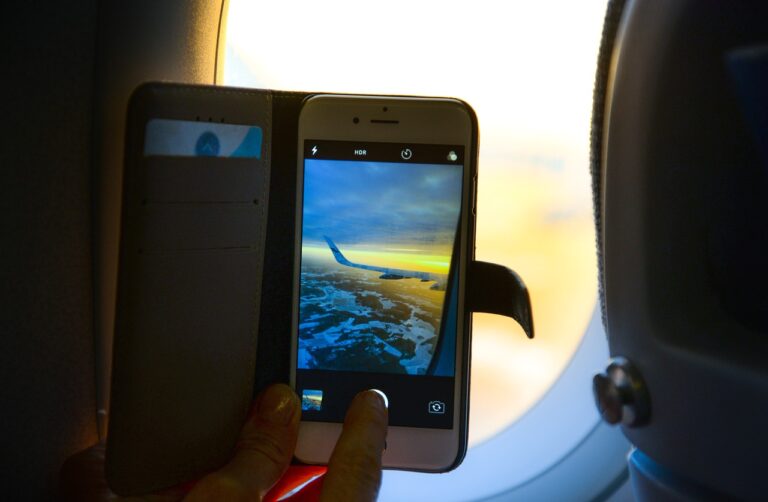A novelty will surprise those who usually book a lot of flights: soon 5G will arrive on the plane. But when will we be able to connect to the Internet and what is new?
We will finally be able to say goodbye to the flight mode, which has always been an obstacle to communication when travelling in the sky. In fact, the European Commission has given the green light to the landing of 5G in planes, a much hoped-for arrival that will completely disrupt the flying experience.
But when will we be able to benefit from 5G in the air and, above all, what new features and changes will it bring?
Table of Contents
5G on planes: when will we be able to connect to the Internet?
One of the biggest pain points for those who fly is often the inability to connect to the Internet, a lack that results in download after download of films the night before, or interrupted communication.
When we fly, we feel not only as if we are suspended in the sky, but as if we are suspended in a limbo in which we exist but, at the same time, disappear completely from the digital network of our friends.
However, this will soon be only a distant memory, eclipsed by the arrival of 5G, through which it will be possible to surf the web. Indeed, a European Commission note reads:
“Passengers on board flights in the EU will be able to use their mobile phones to their full capacity and functionality, just as with a terrestrial 5G mobile network.”
As for when we will be able to ‘get our hands on’ this major technological breakthrough, we will not have to wait much longer, in fact only the arrival of 2023 separates us from 5G.
5G on planes, not only internet connection: it will also be possible to make phone calls
We are all well aware that this innovation will introduce some very important changes, but what are they?
First of all, the service will be available in planes with special network equipment that will allow Internet connection, calls, and text messaging, via a satellite network between the aircraft and the terrestrial mobile network. So, we will finally be able to avoid abandoning our ‘old’ habits.
It is important to remember that this innovation has its roots in 2008, when the Commission guaranteed certain frequencies in order to provide text messaging and telephone services to those flying in the European Union.
Thus, this change would allow for a considerable increase in the range of services provided, especially through the exploitation of the latest technology in data transmission. In particular, Internal Market Commissioner Thierry Breton underlines the impact of this major upgrade:
“5G will enable innovative services for people and growth opportunities for European businesses. The sky is no longer the limit when it comes to the possibilities offered by superfast, high-capacity connectivity”
However, this is not the end of the story, as Brussels’ objectives include development to enable uninterrupted coverage in urban areas and along major transport routes by 2025 and coverage of all populated areas by 2030. So, still a long inter, but one we should not doubt, especially thanks to the very rapid progress of technology.
Will it be safe to use 5G on a plane?
How many times, once seated in an aeroplane, have we been asked to switch to flight mode (at least during the most delicate phases such as take-off and landing). This was to prevent mobile phones from interfering with on-board instrumentation.
So what will happen with the arrival of 5G in aircraft? Could there be safety hazards?
The questions are more than legitimate and, according to what information is currently available, there should be no problems in this regard. This is because the frequencies used to make calls, send messages and connect to the network will be different from those used by the crew to fly the aircraft and communicate with the outside world.
Read also: EU Parliament to allow universal chargers only: how will Apple adapt?












